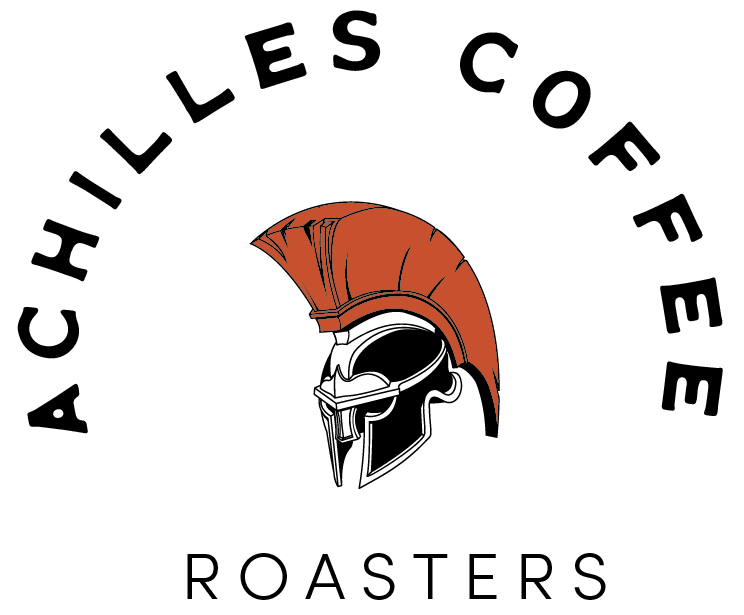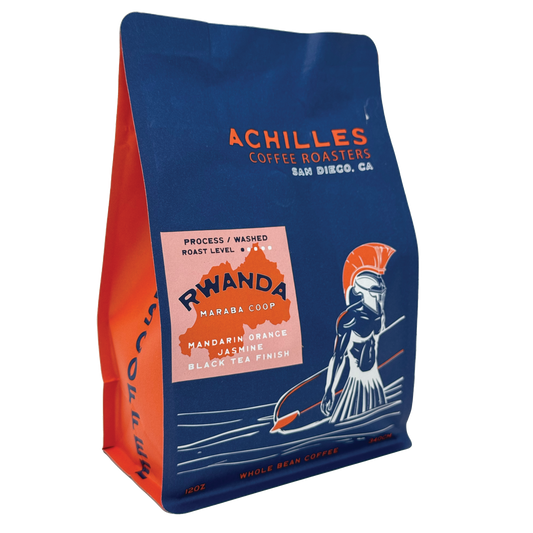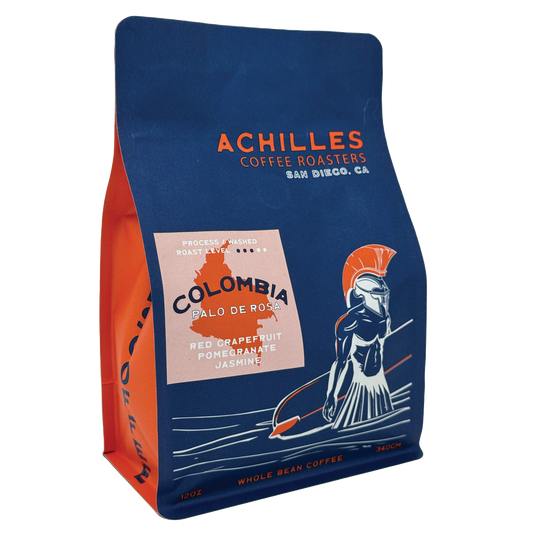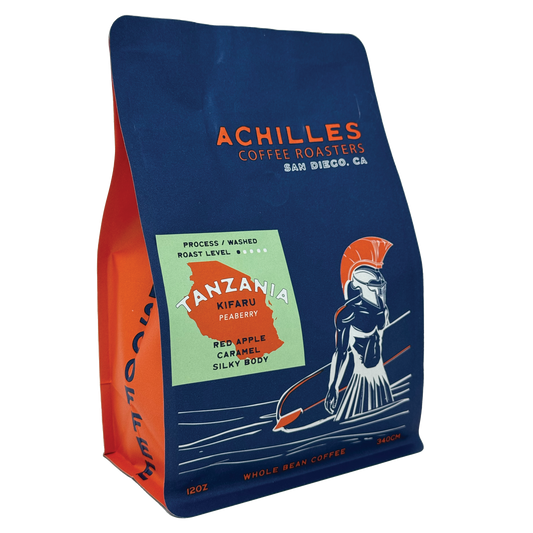When you walk down the coffee aisle or scroll through an online roaster’s collection, you’re immediately met with labels like light roast, medium roast, and dark roast. At first glance, these might seem like simple descriptions of color—but in reality, they represent a fascinating world of flavor transformation. Each roast level dramatically alters the bean’s aroma, sweetness, acidity, and body, shaping how your coffee smells, tastes, and feels in every sip.
Understanding the difference between medium roast coffee and dark roast coffee is one of the most effective ways to discover your personal flavor preference. These two roast levels sit at the heart of most coffee lovers’ routines, offering distinct experiences: one smooth and balanced, the other bold and robust. Medium roasts are known for their versatility and gentle sweetness, while dark roasts deliver the smoky intensity and depth that define traditional espresso.
But choosing the right roast isn’t just about strength—it’s about understanding what kind of coffee experience you enjoy. Do you crave a cup with caramel and nutty undertones that’s perfect for drip brewing? Or do you prefer a rich, velvety shot of espresso with deep chocolate and spice notes? Your roast preference influences everything from the aromas that greet you in the morning to the aftertaste that lingers long after your last sip.
In this comprehensive guide, we’ll explore what sets medium and dark roasts apart, how each roast develops during the roasting process, and how these differences translate to flavor and texture in your cup. You’ll learn how roast level affects acidity, sweetness, and body—and most importantly, how to choose the coffee that best matches your palate and brewing style. Whether you’re just starting your coffee journey or refining your tastes, understanding roast levels is the key to brewing a cup that’s unmistakably yours.
What Happens During Coffee Roasting
Every cup of coffee begins long before it meets water. Coffee beans start as dense, green seeds inside the coffee cherry—raw, grassy, and almost flavorless. It’s the roasting process that transforms these humble seeds into the aromatic, flavorful brown beans we recognize.
When green coffee is roasted, it undergoes a complex series of chemical and physical changes driven by heat. The process unfolds through several critical stages that shape everything from aroma and sweetness to acidity and mouthfeel.
As the temperature gradually increases, the beans expand, lose moisture, and turn from green to yellow to rich shades of brown. Sugars begin to caramelize, developing sweetness, while amino acids react with those sugars in what’s known as the Maillard reaction—the same browning process that gives bread crust or roasted nuts their irresistible flavor.
With continued roasting, acids break down, oils migrate to the surface, and volatile aromatics are released. The longer the roast continues, the more the bean’s natural origin characteristics fade, replaced by flavors derived from caramelization and carbonization.
This progression creates a flavor spectrum that roasters—and coffee drinkers—can fine-tune based on preference:
-
Light Roast:
Retains the most origin character, with bright acidity, fruity or floral notes, and a lighter, tea-like body. Light roasts highlight terroir and are popular among those who enjoy nuanced, complex coffees. -
Medium Roast:
Balances the best of both worlds—moderate acidity paired with caramelized sweetness and a rounder body. Medium roasts are smooth, approachable, and incredibly versatile across brew methods. -
Dark Roast:
Pushes deeper into caramelization and oil development. Acidity drops, sweetness becomes bittersweet, and flavors shift toward smoky, bold, and full-bodied. Dark roasts often emphasize roast flavor over origin nuance.
While every coffee starts the same way, how long and how hot the beans are roasted determines where it lands on this flavor spectrum. A few extra degrees—or even seconds—can dramatically change the cup’s character. Understanding this process is key to appreciating why a medium roast tastes smooth and balanced, while a dark roast feels rich and intense.
What Is a Medium Roast Coffee?
Medium roast coffee represents the perfect middle ground between light and dark roasts—the sweet spot that captures the best of both flavor worlds. Roasted to an internal temperature of around 410–430°F (210–221°C), medium roasts reach just before or shortly after what roasters call the “second crack.” This critical stage marks the point when coffee’s internal oils begin to emerge, giving the beans a subtle sheen and unlocking a deeper layer of sweetness and body without overpowering the bean’s natural flavor profile.
Medium roasts are beloved by baristas and home brewers alike because they strike an ideal balance: preserving the coffee’s unique origin characteristics while also developing the rich, caramelized depth that comes from extended roasting. They’re approachable, aromatic, and endlessly versatile—a true crowd-pleaser that works beautifully across nearly all brewing methods.
Flavor Profile of Medium Roast Coffee
When it comes to taste, medium roast coffee embodies balance and harmony. The acidity softens compared to lighter roasts, yet enough brightness remains to give the cup energy and life. The roast introduces smooth sweetness, gentle nuttiness, and rounded flavors that appeal to both casual coffee drinkers and connoisseurs.
A typical medium roast flavor profile includes:
-
Milk Chocolate – Soft, creamy sweetness with comforting familiarity.
-
Caramel or Toffee – Notes of brown sugar and molasses-like richness.
-
Toasted Nuts – Almond or hazelnut tones that add warmth and depth.
-
Red Apple or Mild Citrus – Gentle fruit acidity that keeps the cup lively.
Medium roasts offer a moderate body and clean finish, making them excellent for everyday drinking. They’re flavorful enough to enjoy black but also pair wonderfully with milk or cream. The balance of sweetness and acidity makes these coffees especially pleasant and smooth, without bitterness or sharp edges.
Why Medium Roast Coffee Appeals to So Many
Medium roast coffee sits right in the “comfort zone” for most palates. Light roasts can sometimes feel too tart or acidic, while dark roasts may come across as too intense or bitter. Medium roasts offer an approachable middle ground—flavorful yet easy-drinking, rich but not overwhelming.
They highlight the best of both worlds: the complexity of the origin and the depth of the roast. This is why medium roast is often considered the standard profile for café drip coffee or house blends—it satisfies a broad range of preferences and brewing styles.
Ideal Brewing Methods for Medium Roast Coffee
Medium roasts are some of the most versatile coffees you can brew. They perform beautifully across various methods, adapting easily to different extraction styles.
Best brewing methods for medium roast include:
-
Drip Coffee Machines – Delivers consistent balance and sweetness for daily brewing.
-
French Press – Enhances body and richness while maintaining smoothness.
-
Pour-Over (Hario V60, Chemex) – Highlights delicate caramel and citrus notes.
-
Aeropress – Produces a bright yet rounded cup with a clean finish.
Medium roasts are also an excellent choice for espresso, particularly for drinkers who prefer shots that are balanced and slightly sweet rather than overly bitter. The moderate acidity and round body create a pleasant base for milk drinks like cappuccinos and lattes.
Why Medium Roast Coffee Is So Popular
Medium roast coffee has earned its reputation as the most universally loved roast because of its flexibility and approachability. It delivers enough depth to satisfy fans of darker coffee while maintaining the subtle fruit and floral tones that make lighter roasts so interesting.
Whether you’re a casual sipper or a coffee enthusiast experimenting with single origins, medium roast coffee is the perfect baseline—a reliable, flavorful option that adapts to your taste and brewing method.
What Is a Dark Roast Coffee?
Dark roast coffee goes beyond the “second crack,” reaching internal bean temperatures of approximately 440–465°F (226–240°C). At this stage, the coffee’s sugars and oils are pushed to their limits—heavily caramelizing and sometimes even beginning to carbonize. The beans take on a deep mahogany to nearly black color, often with a shiny, oily surface that reflects the intense heat they’ve endured. Aromas become bold and pervasive, evoking notes of smoke, toasted sugar, and spice.
Flavor Profile
Dark roasts emphasize roast character over the bean’s origin flavor. The delicate fruit and floral notes of lighter roasts are replaced by a full-bodied, low-acid, and intensely rich cup. This is where coffee’s comforting, classic bitterness shines—balanced by a rounded sweetness from caramelized sugars.
You might taste:
-
Dark chocolate or cocoa
-
Molasses or burnt caramel
-
Charred wood or baking spice
-
Toasted nuts or smoke
The result is a brew that feels smooth, bold, and heavy on the palate, with a lingering finish. Because dark roasts have lower perceived acidity, they appeal to those who enjoy a strong, no-nonsense cup—one that delivers both warmth and depth with every sip.
Ideal Brewing Methods
Dark roasts excel in brewing methods that highlight their richness and texture:
-
Espresso machines – Produce thick, syrupy shots with a deep crema and robust flavor.
-
Moka pots – Bring out dark roasts’ chocolatey and smoky undertones for a bold stovetop brew.
-
Cold brew – Smooths out bitterness while amplifying chocolate and nut notes.
-
French press – Enhances body and mouthfeel, perfect for a comforting morning mug.
The deeper roast level develops soluble compounds that extract easily, yielding strong, concentrated flavors. When paired with milk—especially in lattes, cappuccinos, or mochas—dark roasts create a luxurious, dessert-like experience.
Medium Roast vs. Dark Roast: Key Differences
|
Aspect |
Medium Roast |
Dark Roast |
|
Color |
Medium brown, dry surface |
Deep brown to almost black, oily surface |
|
Flavor |
Balanced, sweet, mild acidity |
Bold, smoky, low acidity |
|
Aroma |
Sweet, nutty, caramel-like |
Roasty, intense, earthy |
|
Body |
Medium, rounded |
Heavy, syrupy |
|
Acidity |
Moderate |
Low |
|
Caffeine Content |
Slightly higher (by volume) |
Slightly lower (due to longer roast) |
|
Best For |
Drip, pour-over, French press |
Espresso, moka pot, cold brew |
The main takeaway: Medium roasts preserve more of the coffee’s natural character, while dark roasts showcase the flavor of the roasting process itself.
Which Roast Is Smoother?
The smoothness of a cup of coffee isn’t determined solely by its roast level—it’s the result of a delicate balance between extraction, brew temperature, grind size, and water quality. While roast plays an important role in shaping flavor and mouthfeel, the true key to smooth coffee lies in how evenly flavors are extracted during brewing.
Medium Roasts: Balanced and Rounded
Medium roasts often strike the ideal point of harmony between acidity, sweetness, and body. For drinkers who appreciate complexity without harshness, this roast level delivers a naturally smooth profile. You might notice:
-
Gentle brightness that lifts the cup without being sour
-
Caramel or toffee sweetness that softens acidity
-
A clean finish with a mild, lingering warmth
Because medium roasts preserve some origin character while introducing light caramelization, they create an approachable smoothness that appeals to a wide range of palates.
Dark Roasts: Low-Acid and Comforting
To others, dark roasts embody smoothness through their low acidity and rich, chocolatey body. The deeper roast breaks down many of the acids present in lighter coffees, resulting in a cup that feels round, velvety, and full-bodied. The flavor leans toward:
-
Cocoa, molasses, and toasted nut
-
Subtle bitterness that balances sweetness
-
A creamy texture that pairs beautifully with milk
For those who prefer a strong, comforting brew with minimal sharpness, dark roasts offer a deeply satisfying smoothness.
When Coffee Doesn’t Taste Smooth
If your coffee tastes sharp, sour, or bitter, the culprit is often extraction technique, not the roast itself:
-
Sourness or sharp acidity usually comes from under-extraction—water passes too quickly or the brew temperature is too low, leaving acids unbalanced.
-
Bitterness or harshness often signals over-extraction—water spent too much time pulling out the heavier, more bitter compounds.
For example:
-
A medium roast brewed too hot or too fast can taste tangy or acidic.
-
An over-extracted dark roast (too fine a grind or too long a brew) can turn harsh or burnt.
By adjusting grind size, water temperature, and brew time, you can bring out smoothness in any roast level, revealing the natural harmony hidden in every bean.
How Roast Level Affects Caffeine
A common misconception is that dark roast coffee contains more caffeine because it tastes stronger and bolder. In reality, the opposite is often true. The roasting process affects not only the bean’s flavor and color but also its density and caffeine concentration.
Caffeine and the Roasting Process
Caffeine is a remarkably stable compound—it doesn’t evaporate easily under heat. However, during roasting, coffee beans lose water and expand, becoming lighter and less dense. As a result, the longer a bean roasts, the more volume it gains and the less mass it retains. This means:
-
By volume (per scoop) – Light and medium roasts contain slightly more caffeine, because the beans are denser and more tightly packed.
-
By weight (per gram) – The caffeine content remains nearly the same, but since dark roasts are less dense, a scoop of them weighs less and therefore contains fewer total caffeine molecules.
So, if you measure your coffee by scoop or tablespoon, you’ll get more caffeine from lighter roasts. But if you measure by weight using a scale, caffeine levels remain almost identical across roast levels.
Perception of Strength
Dark roasts taste stronger, not because of more caffeine, but because of their roasted, smoky, and bitter-sweet flavors. These sensory cues often trick our brains into associating darkness and intensity with higher caffeine content. The truth is, taste strength and caffeine strength are different things.
Why Espresso Feels Stronger
Espresso often feels more caffeinated, especially when made with dark roasts, but that’s due to concentration, not caffeine density. Espresso uses:
-
A higher coffee-to-water ratio
-
Fine grind and high-pressure extraction
This results in a small, concentrated shot that delivers caffeine quickly to your system. While a single espresso shot typically contains less total caffeine than a full mug of drip coffee, its potency per ounce makes it seem stronger.
For context:
-
A 1 oz shot of espresso: roughly 60–80 mg of caffeine
-
An 8 oz cup of drip coffee: roughly 90–120 mg of caffeine
So, while dark roasts and espresso may feel stronger, lighter roasts often contain slightly more caffeine overall—especially when measured by volume.
How to Choose Between Medium and Dark Roast
Your ideal roast ultimately depends on three key factors: flavor preference, brewing style, and how you enjoy your coffee—whether black, with milk, or sweetened. Each roast level offers a different experience, from the bright nuance of medium roasts to the bold comfort of darker ones. Understanding what you value most in a cup will guide you toward your perfect match.
Choose Medium Roast If You Love
Medium roasts sit comfortably in the center of the spectrum, offering balance, complexity, and versatility. They capture origin character while adding just enough caramelization for warmth and depth. You might prefer medium roasts if you enjoy:
-
Balanced flavor with caramel, nutty, or toffee-like notes
-
Moderate acidity that adds brightness without being sharp
-
Subtle sweetness that feels smooth and approachable
-
Brew versatility, performing beautifully in pour-over, drip, Aeropress, and French press methods
-
Black coffee that’s flavorful and rich without the bitterness of darker roasts
Medium roasts are often described as “crowd-pleasers”—they deliver enough nuance for coffee purists while remaining smooth and comforting for everyday drinkers.
Choose Dark Roast If You Love
Dark roasts bring out the bold, smoky side of coffee, emphasizing depth over delicacy. They appeal to those who want a robust, low-acid cup that pairs naturally with milk or sugar. You might prefer dark roasts if you enjoy:
-
Deep, bold flavors with notes of dark chocolate, smoke, or spice
-
Low acidity and a smooth, heavy body that feels rich and comforting
-
Espresso or milk-based drinks, where dark roasts create strong, syrupy bases
-
Coffee that stands up to cream or sugar, maintaining flavor even when blended
Dark roasts are often chosen for their consistency and intensity—they’re the go-to option for those who want a classic, full-bodied experience every time.
Try Both
Many coffee lovers discover that they don’t have to choose just one. Keeping both roast levels on hand lets you explore different moods and brewing styles:
-
Medium roast for bright, balanced morning drip brews or pour-overs
-
Dark roast for rich, satisfying espresso or afternoon lattes
Experimenting with the same coffee origin at different roast levels is one of the best ways to deepen your appreciation for the craft. You’ll begin to taste how roasting transforms sweetness, acidity, and texture—turning a single bean into multiple expressions of flavor.
Storing and Brewing for Maximum Flavor
To keep your coffee tasting its best, always:
-
Buy whole bean coffee and grind just before brewing.
-
Store in an airtight, opaque container away from heat and light.
-
Brew within 3–4 weeks of the roast date.
-
Use filtered water and proper brewing temperatures (195–205°F).
These small steps make a big difference in preserving the clarity and smoothness of your cup—regardless of roast level.
Final Thoughts: Finding Your Perfect Roast
When it comes to medium vs. dark roast coffee, there’s truly no better option—only what resonates with your personal taste and brewing style. Coffee is a sensory experience, shaped by how you like to start your day, what you pair it with, and the flavors you find most comforting.
Medium Roast: Balanced and Complex
Medium roasts strike the perfect midpoint between light and dark, offering a balanced flavor profile that highlights both the bean’s natural origin notes and the gentle caramelization from roasting. These coffees often feature a harmonious blend of acidity, sweetness, and body—bright enough to stay interesting, yet smooth enough to enjoy every day. If you love layered flavor and versatility, medium roasts invite you to explore nuance without overpowering your palate.
Dark Roast: Bold and Comforting
Dark roasts, on the other hand, emphasize depth, richness, and warmth. Their lower acidity and heavier body make them ideal for those who enjoy a full, velvety cup with chocolatey or smoky undertones. The bold flavors of a dark roast espresso or French press create a sense of comfort—like a familiar ritual that anchors your morning.
The Beauty of Choice
Ultimately, there’s no single “right” roast—only the one that brings you joy. Understanding what sets each roast apart allows you to choose intentionally, matching your mood, method, and moment.
You might crave the caramel smoothness of a medium roast when savoring a slow pour-over, or reach for the smoky depth of a dark roast espresso to power through a busy day. Each cup tells a story of craftsmanship—the farmer, the roaster, and the choices made along the way to create the flavors in your mug.
In the end, the perfect coffee isn’t about roast level or brew method—it’s about connection, comfort, and discovery. The best cup is the one that reminds you why you fell in love with coffee in the first place.








